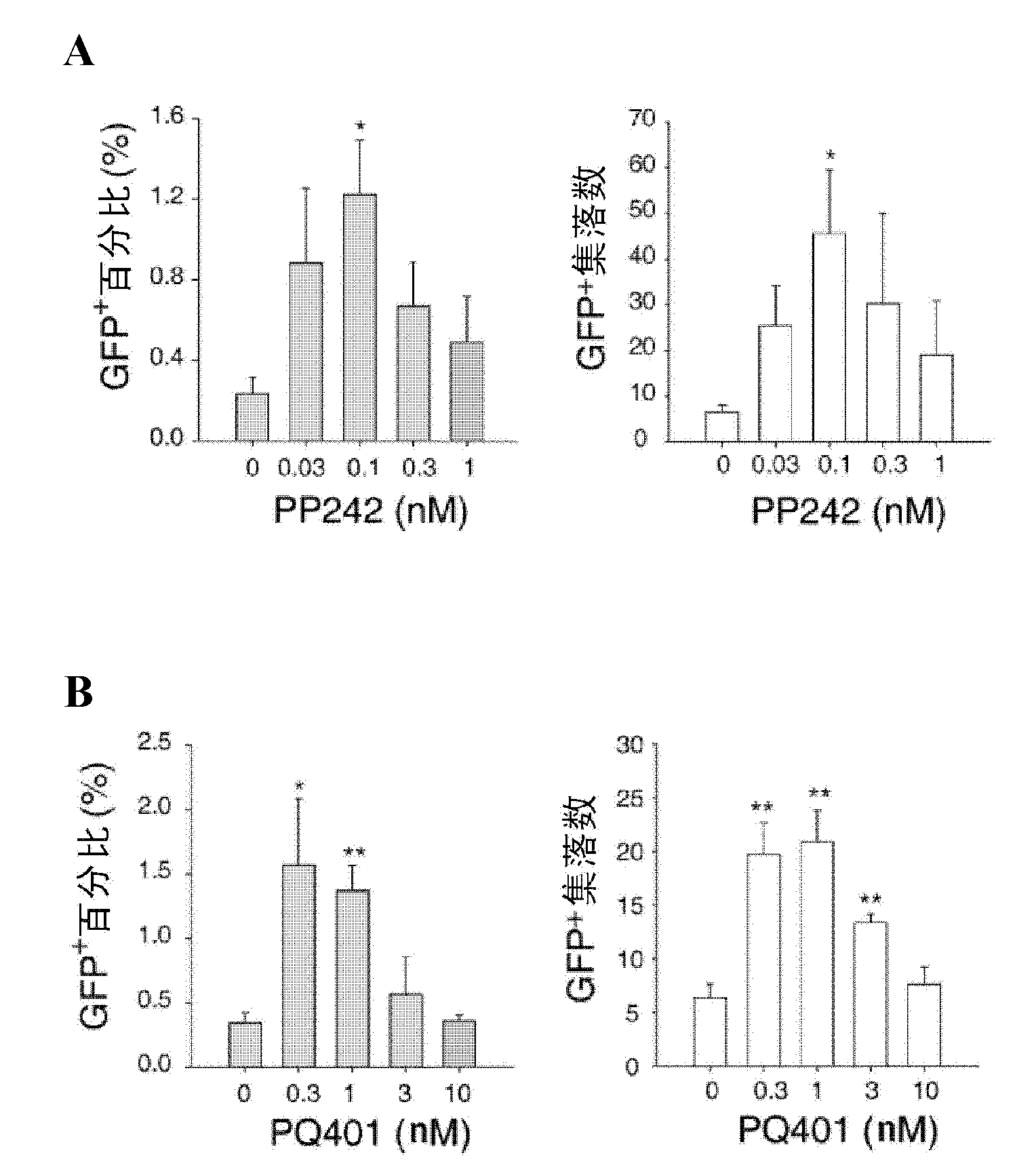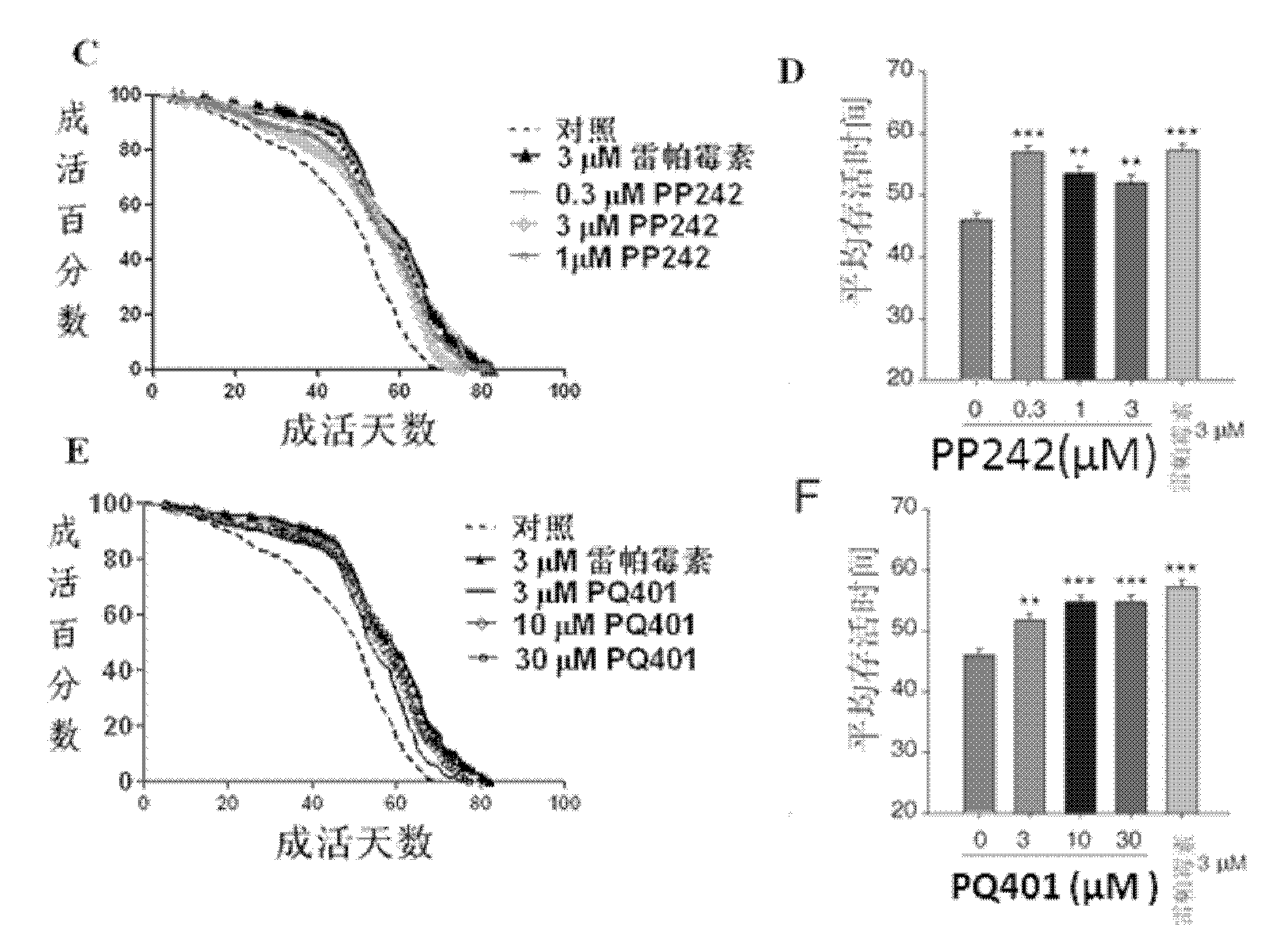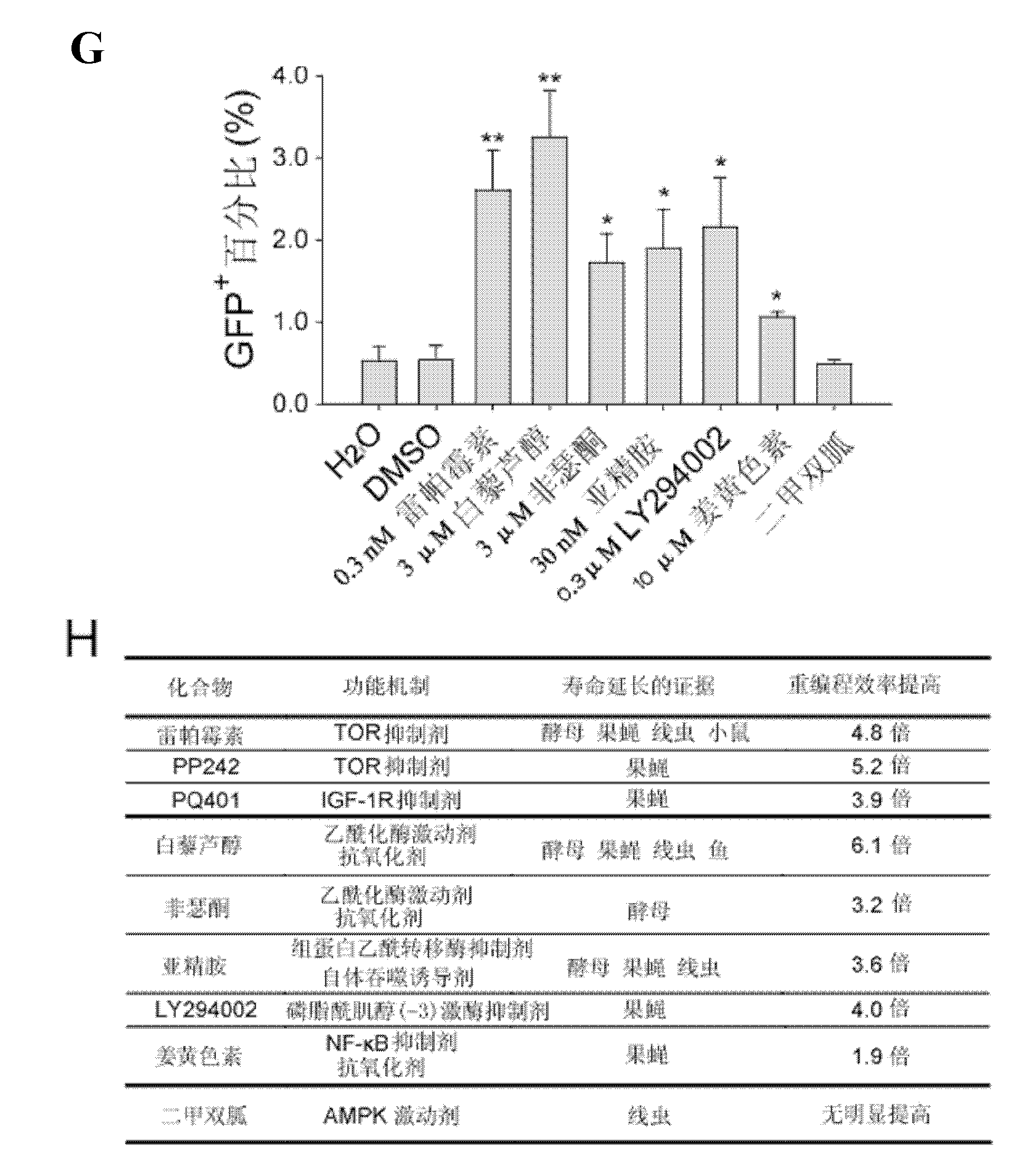Organism lifetime based method for screening compounds capable of improving generation efficiency of induced pluripotent stem cells
A technology for pluripotent stem cells and candidate compounds, which is applied in the field of screening compounds that improve the production efficiency of induced pluripotent stem cells based on the lifespan of organisms, and can solve the problems of low efficiency, affecting the promotion and application of induced pluripotent stem cells, and low efficiency.
- Summary
- Abstract
- Description
- Claims
- Application Information
AI Technical Summary
Problems solved by technology
Method used
Image
Examples
Embodiment 1
[0069] Effect of embodiment 1 rapamycin, PP242 and PQ401 on the lifespan of fruit flies
[0070] The inventors tested the effects of 3 μM rapamycin, different concentrations of PP242 and different concentrations of PQ401 on the lifespan of Drosophila according to the above method. It was found that 3 μM rapamycin, 0.3 μM, 1 μM and 3 μM PP242, and 3 μM, 10 μM and 30 μM PQ401 could significantly increase the survival percentage of Drosophila (eg figure 1 C and E) and average survival time (as shown in figure 1 D and F shown).
Embodiment 2
[0071] Embodiment 2 PP242 and PQ401 to mouse fibroblast GFP + percent impact
[0072] The inventors detected the GFP produced by SKOM transfection under the action of different concentrations of PP242 and different concentrations of PQ401 according to the above method + Cell percentage and GFP + The number of colonies was used to determine the effects of PP242 and PQ401 on the successful transfection of SKOM into mouse fibroblasts. The results showed that PP242 at 0.03nM, 0.1nM, 0.3nM and 1nM, and PQ401 at 0.3nM, 1nM, 3nM and 10nM all increased GFP compared to controls not treated with the subject compound + Cell percentage and GFP + The number of colonies increases the efficiency of SKOM to successfully transfect mouse fibroblasts and make them into induced pluripotent stem cells (such as figure 1 A and B shown). Through quantitative analysis, it can be determined that these compounds can increase the induction efficiency of induced pluripotent stem cells by as much as 3...
Embodiment 3
[0073] Embodiment 3 various compounds are to mouse fibroblast GFP + percent impact
[0074] The inventors also selected rapamycin and compounds that have life-prolonging effects on model organisms such as yeast, nematodes, Drosophila, and mice reported in the literature, including resveratrol, fisetin, spermidine, LY294002 , curcumin and metformin [14-18] , GFP produced by transfection with SKOM under their action was detected according to the method described above + cell percentage. It was surprisingly found that these compounds (3 μM resveratrol, 3 μM fisetin, 30 nM spermidine, 0.3 μM LY294002, 10 μM curcumin) were GFP + The percentage of cells, that is, the efficiency of successfully transfecting mouse fibroblasts with SKOM to make them into induced pluripotent stem cells (such as figure 1 G and H).
PUM
 Login to View More
Login to View More Abstract
Description
Claims
Application Information
 Login to View More
Login to View More - R&D
- Intellectual Property
- Life Sciences
- Materials
- Tech Scout
- Unparalleled Data Quality
- Higher Quality Content
- 60% Fewer Hallucinations
Browse by: Latest US Patents, China's latest patents, Technical Efficacy Thesaurus, Application Domain, Technology Topic, Popular Technical Reports.
© 2025 PatSnap. All rights reserved.Legal|Privacy policy|Modern Slavery Act Transparency Statement|Sitemap|About US| Contact US: help@patsnap.com



